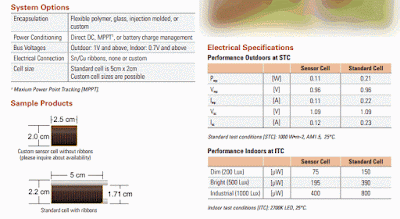Energy Harvesting Book
Energy Harvesting Survey paper
Energy Harvesting Kit
Piezo harvesting video
Ultra Low Power Harvester Power Management IC with Boost Charger, and Nanopower Buck Converter
This is pretty interesting!
One possible solution for powering these wearable devices without a battery is to harvest energy from human body to generate electricity using a thermoelectric generator. A thermoelectric generator (TEG) is a solid-state device that can convert heat into electricity. When a TEG is attached directly onto the skin, heat from the human body flows through the TEG due to the temperature difference between the skin and the ambient. This heat flow, or the temperature gradient, creates a voltage in the TEG by the Seebeck effect, which performs useful work when connected to an external circuit.
According to our calculations, a power output on the order of hundreds microWatts can be achieved using a wearable TEG of wrist-band type made of the existing polymeric or paste-type inorganic materials. Read our recent paper published in J. Mater. Chem. C for more information and complete review of the state-of-the-art flexible thermoelectric materials and devices.
• J.-H. Bahk, H. Fang, K. Yazawa, and A. Shakouri, “Flexible thermoelectric materials and device optimization for wearable energy harvesting,” J. Mater. Chem. C, accepted manuscript (2015). DOI: 10.1039/C5TC01644D
——
http://nanotechweb.org/cws/article/tech/55664
Flexible TEG breaks new power record
An intensive study of the performance of TEGs developed at IMEC and the Holst Centre allowed predicting the average limits for power production on man. At normal indoor conditions, the upper level is equal to about 30 µW per square centimeter occupying on the skin, on 24-hour average. It should be stressed that this is the acceptance-related limit [2, 3]. Taking into account the requirement of 50-100 µW necessary for the data processing and radio transmission, the self-powered wireless sensor nodes typically occupy an area of several square centimeters like a watch.
http://www.hindawi.com/journals/ijdsn/2015/438695/
International Journal of Distributed Sensor Networks
Volume 2015 (2015), Article ID 438695, 17 pages
http://dx.doi.org/10.1155/2015/438695
A Survey on Energy Harvesting and Integrated Data Sharing in Wireless Body Area Networks
A vibration energy harvester system using ME transducer can produce an output power density of 0.472 mW/cm3 at the acceleration of 1 g at 51 Hz [26].





